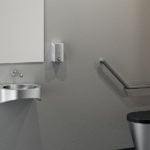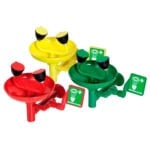We rely fully on stainless steel as the material for our products. You will often find references to material 1.4301 or V4A stainless steel on our products. But what are these designations all about and what are the differences?
What is stainless steel anyway?
Stainless steel is an alloy of iron, chromium and other metals that is widely used for its corrosion resistance and strength. Two common variants of stainless steel are V4A and V2A, which differ mainly in their chromium and nickel content.
V2A stainless steel
V2A stainless steel, also known as AISI 304, consists of approximately 18 % chromium and 8 % nickel. This has given it good resistance to rust and corrosion, making it ideal for use indoors or in environments with moderate moisture content. V2A stainless steel is often used for household appliances, kitchen utensils and non-rusting screws.
V4A stainless steel
V4A stainless steel, on the other hand, also known as AISI 316, contains about 17 % chromium, 10 % nickel and 2-3 % molybdenum. The increased molybdenum content gives V4A stainless steel even better corrosion resistance, especially to chlorine-containing media such as seawater or chemical cleaning agents. Therefore, V4A stainless steel is often used in environments exposed to strong moisture or aggressive substances, such as in the chemical industry, offshore or marine applications.
Summary
Overall, the main difference between V4A and V2A stainless steel is their corrosion resistance and mechanical strength. While V2A stainless steel is sufficient for general indoor use, V4A stainless steel offers improved corrosion resistance and strength, making it ideal for more demanding environments. When selecting the appropriate stainless steel, the specific requirements of the application and the environmental conditions should be considered.





